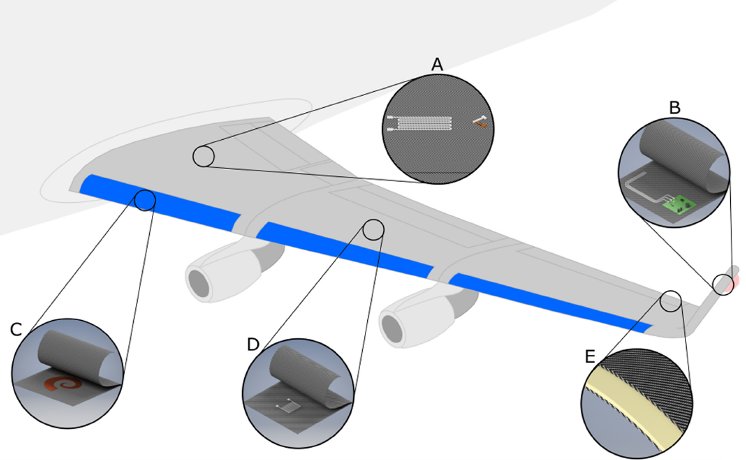Professor Baumann, how do you define “Industrial Printing”?
Prof. Dr. Reinhard R. Baumann: In my view, it is first of all the mass production of print products for different markets. The existing print technical knowledge can be used for products and markets beyond traditional printing. Previously it mainly addressed human vision and partly also touch and smell. This is still true as far as decorative, textile and packaging printing is concerned. However, there are also new applications that cannot be perceived by human senses. As a result, printed electronics give access to very interesting markets. Yet it is still open who will serve them.
Which “printed functionalities” are in the focus at Fraunhofer ENAS?
Baumann: Our aim is to print defined patterns of materials on preferably flexible substrates using any kind of liquids. These patterns must satisfy highest demands as to precision and layer thickness without post-processing. For printing, silver and other, often very expensive conductor and semi-conductor materials based on nanoparticles are used. In addition, UV inks as insulators are also used. Conductors, semi-conductors and insulators are the basic components of electronics. They can be used to produce printed circuit boards with resistors, diodes and transistors, but also batteries and antennas. The advantage: Material is only deposited where it is really needed. Compared with etching and laser processes, the amount of material used, the processing time and the expenditure for production as well as recycling are lower. In addition, vacuum or clean room conditions are not required for printing. Nevertheless, the efficiency level in transistor printing is more than 90 percent. We have printed ten thousands of them, have continuously improved the parameters and geometries and have found out: The smaller the transistors, the more reliable the process. Here, it`s not about highly complex microchips, but there are definitely applications.
Which ones?
Baumann: Printed sensor networks in which we print large-area sensors. Or individually designed, environmentally friendly zinc manganese dioxide batteries. We can scale their energy contents and design them for the respective application. Our antennas are geared to the ultra-high frequency (UHF) range – for instance, for RFID labels and even higher communication frequencies. The use of RFID in logistics was rather weak because the labels produced in large quantities worked only partially. This was often due to the dielectric environment. We adjust the shape of the antenna to the specific application and thus achieve a highly reliable communication. The RFID technology functions consistently good when we work on a three-dimensional basis, for instance, by printing antennas on the folding edges of a package. We also develop printed functions for the interior and exterior of cars and aeroplanes. Furthermore, there are other interesting markets: The lab-on-chip technology for which we print membranes using inkjet processes and where we can exactly scale their pore sizes.
Do you use traditional printing methods or rather digital methods?
Baumann: We use both. On the one hand, we use screen and gravure printing processes with which we, inter alia, produce very homogeneous, precise layer thicknesses in fuel cells. Gravure printing is also the process of choice for high-resolution patterns. However, we above all use digital inkjet methods since they enable us to process a huge variety of inks. We have inkjet heads that apply nearly every liquid. Considering the high price of inks, it is important to minimize the ink volumes in the inking system.
To which extent do the workflow and the associated measurement technology change?
Baumann: When you look at the process from the data source to the end product, it is a production technology like any other. Here, the printing machine is just one of a large number of output systems. Quality inspection, however, is very demanding. Visional inspection methods ensure production only to a limited extent. Other measurement methods are, for example, required when ceramic inks with piezoelectric properties are used. This opens up an important field of research which will be crucial for the broader application of functional printing.
Do you see your research as part of printing technology or rather of microelectronics?
Baumann: I see it as a general production technology within the scope of which we use printing technology in order to integrate innovative functions into products. What we understand by it can be explained by looking at the “Go Beyond 4.0” Fraunhofer lead project, which I am coordinating, as an example. We explore the application of printing methods for wireless touch functions in the interior of automobiles, the printing of sensors directly onto fibre composites, for instance, on aeroplane wings as well as individualized lighting systems. Our aim is to manufacture products from quantity 1 in networked process chains. Digital functional printing is optimally suited for individualisation in mass production. The digital printing method converts data directly into functions which are then deposited in the production line exactly where a customer needs them. Furthermore: at lower cost, with less usage of material and utmost reliability. This approach goes far beyond Industry 4.0 and will work in different industries. Together with a partner company in Chemnitz, we develop the modular machines that are needed for that.
Market studies predict a strong global growth for industrial printing. Where do you see the most important growth sectors – from today`s perspective?
Baumann: The supporting industries are the automotive industry which needs new energy storage systems for electromobility and new engineering concepts for self-propelled vehicles, the aerospace industry as well as the microelectronics and lighting sectors with interesting niches for functional printing.
http://dup.vdma.org




